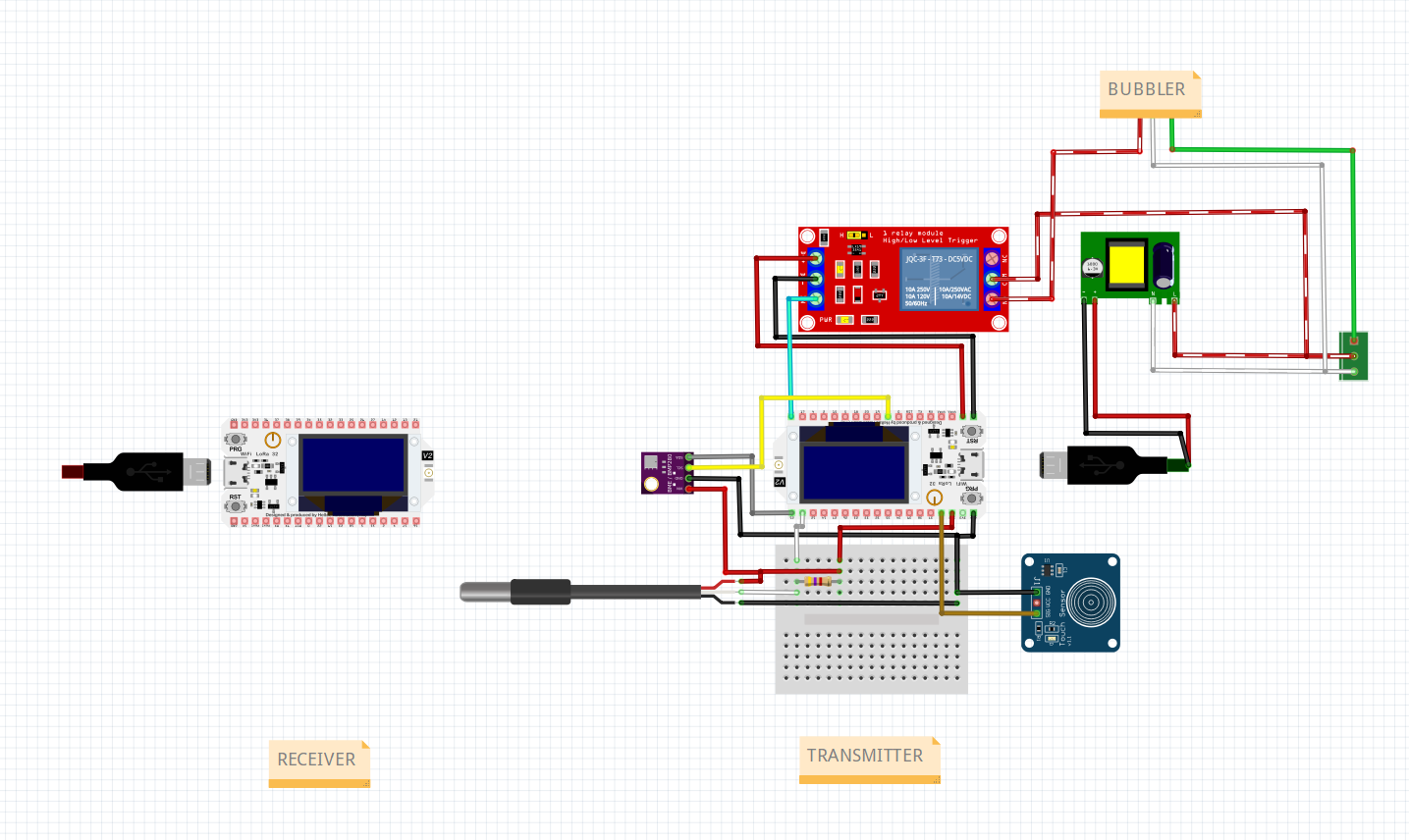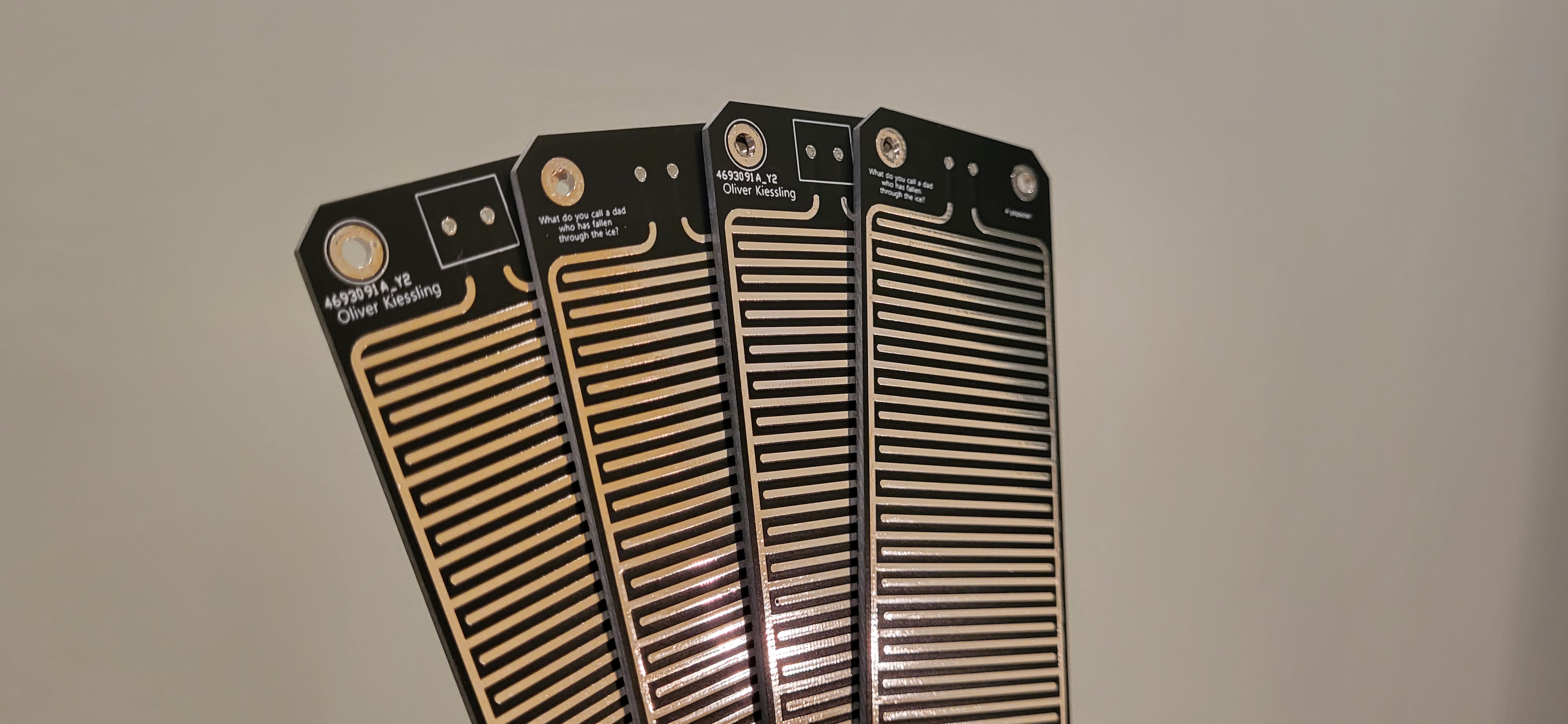Bubblez
Bubblez is a tool for individuals with Bubblers in Northern communities to measure the ice thickness and save hundreds every year on hydro when keeping their docks and boathouses clear of ice.
Introduction
Many individuals in northern communities have fixed structures in lakes and oceans such as docks and boathouses that have to be protected from ice damage in the winter. The most common solution is to use a Bubbler which is a funny word for an electric motor with a propeller that continuously pushes warmer water from the bottom of the lake to the surface preventing ice formation. The challenge is this device has to run for 4 months of the year which can become a significant electricity cost at 120V - 5 Amps continuous. Some individuals use timers to only run the Bubblers for set hours however often the bubbler is running for longer than necessary to clear the ice present.
The solution is Bubblez! A low-cost, capacitance-based sensor to measure ice formation and control when to activate/de-activate Bubblers in the winter months.
 Back of the napkin calculations on estimated cost saving
Back of the napkin calculations on estimated cost saving
Above we can see some calculations on the estimated cost saving of such a product assuming it only needs to run the Bubbler 30% of the time it does originally. We can see potential savings over 10 years would range from $1000 to $10,000 based on the cost of hydro during winter months. This creates a really easy selling point for the customer as our app to control your bubbler could just show you how much money you are saving every day the system is operational.
Technology
Bubblez works on a very simple electrical principle of measuring capacitance with the air, water, and ice all having different dielectric constants. In a simple parallel plate capacitor the formula is as follows: \(C = {k*\epsilon_o * A \over d}\). Holding the area of the plate, the distance between plates constant (\(\epsilon_o\) is the permittivity of space and is a constant) we can see the capacitance varies proportionally to the dielectric constant \(k\). The dielectric constant is a property of the material itself.
| Material | Dialectric Constant (\(\epsilon_o\)) |
|---|---|
| Air | 1 |
| Water (20°C) | 80 |
| Ice | 3.2 |
As can be seen, the dielectric constant for water and ice are very different which is awesome because we don’t need the microcontroller measuring the capacitor to be as sensitive. The problem is air and ice have very similar values which is why we completely submerge the capacitance measuring board so that we don’t have to deal with determining the difference between the two. As the ice forms at the water surface, it grows downward changing the material covering the capacitance sensor which we can measure as a difference in capacitance in the Arduino.
 Initial Testing results of using an Interdigital Capacitance Sensor
Initial Testing results of using an Interdigital Capacitance Sensor
Seen above is some initial testing we did in a freezer and a glass of water. We can see that across two tests we are getting really good repeatability. Over time the water in the glass undergoes the phase change to ice which has a lower dielectric constant which results in lower capacitance.
Build
Electrical Build
I designed an interdigital Capacitance PCB for this project that would sit in a float to measure ice thickness. I initially designed the PCB in Autodesk Eagle but later switched to Fusion360 PCB Studio so I could ensure the copper traces would be exposed. These boards interface with the microcontroller through the two wires at the top and have copper traces on both sides to maximize the sensitivity of the sensor.
The system would interface with a microcontroller and a relay to measure the capacitance value and trigger the Bubbler ON/OFF depending on the amount of ice thickness measured. This data would be sent over LORA or Wifi to another microcontroller which locally runs some sort of IoT app allowing the user to control the system remotely and see how much money they are saving! Additionally, the system could have a few more sensors such as a BME280 and DS18B20 to let the user measure water temperature and air temperature.
 POC wiring diagram to control Bubbler and give 5V power to ESP32 microcontroller with AC/DC converter
POC wiring diagram to control Bubbler and give 5V power to ESP32 microcontroller with AC/DC converter
Future Uses
Ultimately Bubblez is a sensor that can be used to measure the level of many different types of fluids as long as they have different enough dielectric constants and the PCB is sensitive enough. Future potential applications could be replacements for water-level gauges in water or fuel tanks at a lower price point than existing solutions.

